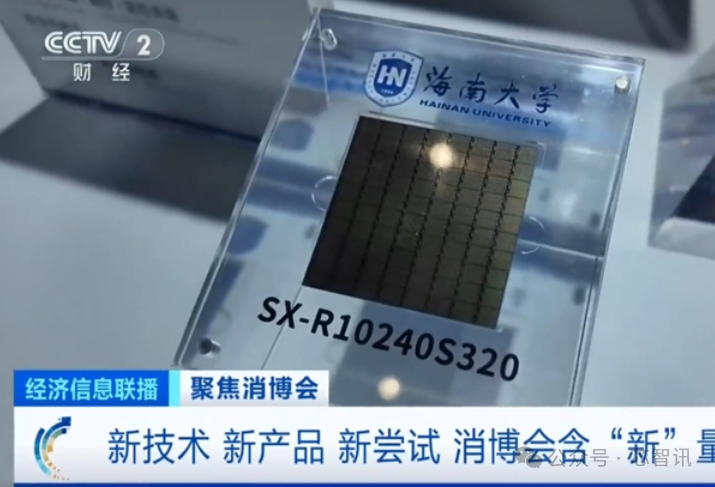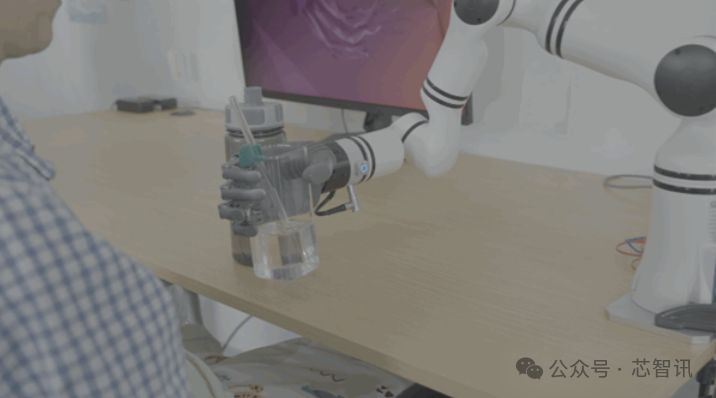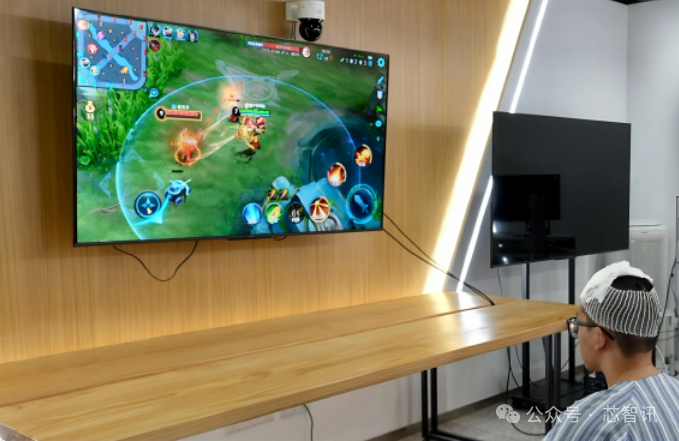A Brain-Computer Interface (BCI) is a technology that directly connects the brain to external devices, allowing human-computer interaction through neural signals without relying on traditional muscle or language commands. In simple terms, a BCI acts as a “super link” between the brain and the external world. It enables us to bypass the body and control devices that were previously only manageable through hands or speech, eliminating cumbersome operations and complex instructions; a mere thought can open up a whole new world.
Currently, BCI technology is typically categorized based on “invasiveness” into three main types: non-invasive (external to the brain), invasive, and semi-invasive. Since the transmission and reception of information in the brain is accomplished through neurons, BCIs require “sensors” to monitor neuronal activity. The closer the sensors (neural electrodes) are to the neurons, the clearer the signals will be. Therefore, semi-invasive and invasive BCI technologies can obtain higher clarity of brain signals, but these technologies also have relatively high barriers to entry. Elon Musk’s Neuralink, for instance, has opted for invasive BCI technology.
Although China started relatively late in semi-invasive and invasive BCI technologies, recent developments have been rapid, with several domestic BCI technology teams achieving new breakthroughs.
Full Chain Autonomous Control! Hainan University Unveils BCI-Specific Chip
According to the official WeChat account of the School of Biomedical Engineering at Hainan University, during the 5th China International Consumer Products Expo held from April 13-18, Hainan University officially launched its self-developed core technology and series of products for implantable BCIs, including a globally leading BCI-specific chip, a neural signal acquisition system, a neural signal modulation system, and a neuron localization system.

The School of Biomedical Engineering at Hainan University stated that this breakthrough marks the realization of full-chain technology autonomy in the field of BCIs in China, injecting “Chinese chip” power into brain science research and medical applications.
It is reported that the neural engineering team at Hainan University has nearly twenty years of experience in the research and development of BCI chips and systems, having developed several core chips around invasive BCIs, including: the SX-R128S4 high-throughput neural signal acquisition and stimulation chip, the SX-S32 high-degree-of-freedom neural modulation chip, and the SX-WD60 low-power wireless transmission chip.
The aforementioned chips achieve full-link coverage of BCI signal acquisition, modulation, and transmission, with performance on par with leading international products, and have received high recognition from many research institutions and enterprises in the industry.
The team leader stated: “Dedicated chips are the core of BCI systems. The team has always focused on chip development iterations, adhering to independent innovation, and the chip performance has reached an internationally advanced level. We are committed to bringing research results out of the laboratory, breaking China’s dependence on imported invasive BCI chips, and helping the Chinese BCI industry take off.”
Beijing Brain No. 1 Completes First Batch of Wireless Fully Implantable Systems
Additionally, as an intelligent BCI system independently developed by researchers in Beijing, “Beijing Brain No. 1” has recently completed the international first batch of flexible high-throughput semi-invasive wireless fully implantable BCI systems in Peking University First Hospital, Xuanwu Hospital of Capital Medical University, and Beijing Tiantan Hospital affiliated with Capital Medical University. Patients have recovered well post-surgery, with over 98% effective channel counts. Using the “Beijing Brain No. 1” intelligent BCI system, paralyzed patients can remotely control computers, robotic arms, and even drive muscle stimulation devices, promoting the gradual recovery of their limb motor functions.
The semi-invasive “Beijing Brain No. 1” and invasive “Beijing Brain No. 2” intelligent BCI systems were jointly developed by the Beijing Brain Science and Brain-like Research Institute and the Beijing Chip Intelligence Neurotechnology Co., Ltd., both achieving world-leading levels. On March 20, the Brain Institute, Chip Intelligence, and Xuanwu Hospital jointly announced the world’s first wireless implanted Chinese language BCI, successfully helping a patient with aphasia due to amyotrophic lateral sclerosis (ALS) to rebuild communication abilities.

According to Professor Zhao Guoguang, director of the National Center for Neurological Diseases and president of Xuanwu Hospital, the first participant in this clinical trial was a 67-year-old ALS patient. She was diagnosed with ALS in 2023 at Xuanwu Hospital, and as the disease progressed, she developed severe speech impairment, severely limiting her communication with the outside world. Before the surgery, Professor Zhao’s team accurately located the patient’s language motor function area and recently performed the world’s first wireless implanted Chinese language BCI surgery.
With the assistance of a neurosurgical robot, “Beijing Brain No. 1” was precisely implanted into the critical area of the left brain controlling language movement. The surgery adopted a semi-invasive BCI technology approach, placing 128-channel flexible high-density electrodes outside the dura mater, achieving high-quality neural signal acquisition with minimal trauma; a coin-sized main control and signal transmission device was embedded on the surface of the skull, enabling efficient transmission of neural signals and wireless power supply through near-field communication. Intraoperative tests and postoperative activation both indicated good signal acquisition quality.
On March 14, the patient began language decoding training, with good signal acquisition. After just 3 hours of training, the real-time decoding accuracy for 62 commonly used words reached 34%. Currently, the patient’s real-time decoding accuracy has reached 52%, enabling her to decode phrases like “I want to drink water,” “I want to eat,” and “I am in a good mood today, I want to walk with my family.” Combined with a real-time optimization algorithm based on a language large model for adaptive error correction, she has developed a basic ability for language communication, showing significant potential for language recovery.
In February and March of this year, “Beijing Brain No. 1” also completed the international first batch of flexible high-throughput semi-invasive wireless fully implantable BCI systems in Peking University First Hospital and Tiantan Hospital, with patients recovering well and over 98% effective channel counts. Using “Beijing Brain No. 1,” paralyzed patients can remotely control computers, robotic arms, and even drive muscle stimulation devices, promoting the gradual recovery of their limb motor functions. Furthermore, “Beijing Brain No. 1” is the first wireless fully implantable BCI system in the world to achieve language decoding for aphasia patients, helping them rebuild their communication abilities.
19-Year-Old Right Frontal Lobe Epilepsy Patient Successfully Implanted with Brain Tiger Technology’s 256-Channel Flexible BCI
Recently, another domestic BCI technology manufacturer, Brain Tiger Technology, in collaboration with the Shanghai Institute of Microsystem and Information Technology of the Chinese Academy of Sciences, achieved another significant breakthrough in a clinical trial for high-precision real-time motion decoding at Huashan Hospital affiliated with Fudan University—a 19-year-old right frontal lobe epilepsy patient successfully had a 256-channel flexible BCI (with core electrodes, chips, etc., all self-developed) implanted, and the patient recovered well post-surgery, smoothly entering clinical trials two days later.

Through a cumulative 19.87 hours of training using classic paradigms such as Center-out and WebGrid, the subject achieved precise brain control operations in classic games like “Pac-Man,” “Tank Battle,” and large complex games like “Honor of Kings” and “Black Myth: Wukong.”
Moreover, based on Brain Tiger Technology’s self-developed XessOS BCI operating system, the subject could smoothly browse the internet and operate various apps (such as Bilibili, Xiaohongshu), control smart wheelchairs and smart home devices (lighting, curtains, etc.), significantly enhancing the independent living capabilities of individuals with motor function disabilities.
It is reported that the patient’s ability to achieve precise brain control over complex games is primarily attributed to Brain Tiger’s team, which, through the 256-channel flexible BCI, collected local field potential signals (LFP) and mapped them in real-time to the screen cursor’s movement trajectory, forming a visual feedback closed-loop control mechanism, thus enabling precise control of external devices through the XessOS BCI operating system.
During the training process, the team employed the classic Center-out experimental paradigm to calibrate the decoding model: using a position-velocity Kalman filter algorithm, the 256-channel cortical EEG signals were real-time decoded into cursor speed commands, allowing the subject to quickly master the control ability of the closed-loop neural cursor.
To further enhance brain control capabilities, the team introduced the WebGrid paradigm, requiring the subject to move the cursor to designated target grids through motor imagery. By gradually increasing the complexity of the grid, the subject’s brain control ability continued to optimize.
After nearly 20 hours of training, the subject’s cursor brain control performance under the enhanced user interface reached 4.07 bits/second—this performance is close to that of Musk’s Neuralink’s first subject, Noland, after 60 hours of training under the enhanced user interface.
It is worth mentioning that throughout the clinical trial process, the subject’s condition was good, and performance was excellent. After the trial, the medical team at Huashan Hospital successfully located the epilepsy focus using Brain Tiger Technology’s self-developed 256-channel flexible BCI and performed a successful resection surgery, ensuring the complete protection of the motor function area, with the recovered subject showing no functional impairments.
In response, Brain Tiger Technology’s CEO Peng Lei told the subject: “You are the first young person in China to achieve 100% brain-controlled mouse operation.”
According to reports, Shanghai Brain Tiger Technology Co., Ltd. was established in October 2021 and is a life science technology company focused on flexible BCIs to protect and explore the brain. Based on the flexible electrode system solution, Shanghai Brain Tiger Technology is developing three major directions for core technologies of high-throughput, low-trauma, and long-term implantable flexible BCIs, including integrated micro-system solutions for electrodes, chips, materials, packaging, and implantation.
Editor: Chip Intelligence – Lin Zi
Previous Exciting ArticlesWhy did Huang Renxun urgently visit China after H20 was banned?Q1 net profit surged 92%! ASML responds to the impact of US tariff policiesBenchmarking against leading international manufacturers, Zhenmao Jia’s SiC/GaN all-scenario solutions are unveiledFrom chips to intelligent platforms, MediaTek is reconstructing the boundaries of AI experienceFormer Intel CEO appointed chairman of xLight, promoting commercial use of FEL-EUV light sources by 2028! Costs can be reduced by three times!The US announces exemptions from “reciprocal tariffs” on products such as mobile phones, PCs, servers, and semiconductors!Emergency notice on the identification rules for the “country of origin” of semiconductor productsTaiwan Semiconductor Manufacturing Company to be fined over $1 billion?Intel’s 18A yield has reached an “acceptable” level, winning important external customersNorth Huachuang’s net profit surged 44.17% last year, expected to rise another 52.79% in the first quarter!What is the impact of China’s 34% tariff increase on the semiconductor industry?DuPont China under investigation for suspected monopoly!
For industry communication and cooperation, please add WeChat: icsmart01
Official Chip Intelligence Group: 221807116